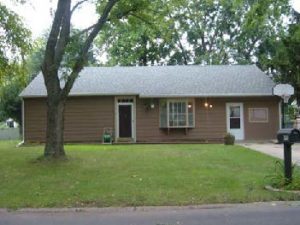Housing & Community Development
Housing Assistance Programs

Housing assistance programs established by the City of Champaign are funded through a variety of Federal, State, and private sources: the U.S. Department of Housing and Urban Development (Community Development Block Grants and HOME Investment Partnership Program), Illinois Housing Development Authority (Neighborhood Stabilization Program), and the Federal Home Loan Bank of Chicago.
The Neighborhood Programs Manual outlines the policies and procedures for the programs offered through the Neighborhood Services Department. These programs are offered to provide opportunities for neighborhood wellness and housing opportunities for citizens of Champaign.
Many programs listed below reference the Median Family Income (MFI) Guidelines requirement.
Full Home Improvement Program (FHIP)
Minor Home Repair Program (MHRP)
Home Accessibility Retrofit Program (HARP)
Accessory Structure Demolition (ASD)
Residential Exterior Rehabilitation Program (RERP)
Safety Lighting Energy Efficiency Program (SLEEP)
Rent Assistance
- The Housing Authority of Champaign County (HACC) helps provide homes for low-income families.
- Tenant-Based Rent Assistance Program-Using City of Champaign HOME funds, Champaign County Regional Planning Commission is offering a limited number of slots for homeless or low-income households to enroll in a program to significantly improve household self-sufficiency within two years. For more information please call TBRA Intake at 217-239-3557
- Accessory Structure Demolition
- Minor Home Repair
- Full Home Improvement
- Home Accessibility Retrofit
- SLEEP
Contractors are approved through a verification of work, insurance and both business and financial references before being added to the contractors’ list. Furthermore, all approved contractors must be certified or have minimal lead based paint safe work practices. To apply, please refer to the Neighborhood Programs Contractor Packet or contact Neighborhood Programs at (217) 403-7070.
Community Development
The City of Champaign utilizes local, State, and Federal sources to revitalize neighborhoods, encourage economic and community development, and provide improved community facilities and services.
Many of these activities are focused on benefiting low- and moderate-income persons or areas that are identified in either the City of Champaign Consolidated Plan, the Neighborhood Wellness Plan, or in a specific neighborhood improvement plan.
Watch a short video highlighting our community development efforts in past years
The completed Neighborhood Plan includes four parts: an existing conditions analysis; vision, goals, objectives; land use plan and implementation recommendations. The existing conditions analysis was completed in 2009. The plan provides guidance to the City on the Bristol Place redevelopment and other actions to improve the neighborhood.
It is designed to be a holistic plan that addresses physical issues, such as vacant lots and deteriorating housing stock as well as social issues, such as the need for more activities for children in the neighborhood. In addition, the plan is also intended to be used by the City and the neighborhood group when applying for grants and other funding.
Further redevelopment efforts will include a public services campus and neighborhood commercial developments. Single-family affordable housing development is also included in the plan as a priority for this neighborhood.
 In 2007, the City of Champaign, Champaign Park District, Unit 4 School District, Don Moyer Boys and Girls Club, and the United Way created a partnership to begin addressing youth issues identified by neighborhood residents and police officers in the Garden Hills neighborhood.
In 2007, the City of Champaign, Champaign Park District, Unit 4 School District, Don Moyer Boys and Girls Club, and the United Way created a partnership to begin addressing youth issues identified by neighborhood residents and police officers in the Garden Hills neighborhood.
The CommUnity Matters model is now expanding to other areas to address issues identified by neighborhood residents and associations, frequently involving youth, in the City’s targeted neighborhoods.
This initiative is a partnership with substantial funding from the Community Development Block Grant and Urban Renewal funds at the City of Champaign, as well as significant in-kind staffing and resource contributions from the partner agencies.
The Douglass Square redevelopment, similar to the Taylor Thomas and Oakwood Trace developments, was undertaken by both the City of Champaign and the Housing Authority of Champaign County (HACC). The Burch Village structures were obsolete and had issues with crime and other social disturbances and required more than just refurbishing and/or remodeling.
The HACC received HOPE VI demolition funds from the U.S. Department of Housing and Urban Development for the removal of the existing structures and the relocation of the residents.
Financing for the construction of the new development included Low Income Housing Tax Credits from the State of Illinois, HOME funds from the City of Champaign and the State of Illinois, and Affordable Housing Program funds from the Federal Home Loan Bank-of Chicago. The new development includes 50 units of mixed-income as well as a community space and onsite laundry.
Twelve of the 15 homes are subsidized by the City through HOME and Community Development Block Grants to create affordable housing compliant with the U.S. Department of Housing and Urban Development. The site was formerly the location of the Mansard Square Apartments, which were demolished in 1999-2000 to make room for the future development of single-family homes.
The subdivision was named after Taylor Thomas, a local educator who served the community in a variety of ways. He was the first director of the Douglass Center, the first honorary commissioner of the Champaign Park District, and one of the first African-Americans to teach in the Urbana School District.